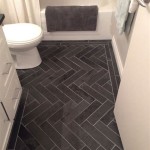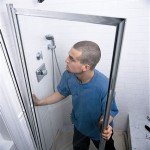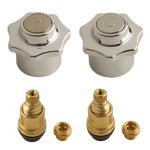Why Do My Bathroom Drains Stink?
Anyone who has ever experienced the unpleasant odor emanating from bathroom drains knows that it can be a frustrating and embarrassing problem. While there are numerous potential causes for this issue, the most common ones are:
- Hair buildup - Hair is one of the most common culprits when it comes to clogged drains. As hair accumulates in the drain, it can trap other debris, such as soap scum and dirt, which can lead to a buildup that blocks the drain and causes water to back up. Stagnant water provides an ideal breeding ground for bacteria, which can produce foul odors.
- Soap scum - Soap scum is another common cause of smelly drains. When soap combines with hard water minerals, it can form a sticky residue that clings to the sides of the drainpipe. Over time, this residue can build up and restrict water flow, allowing bacteria to thrive and produce odors.
- Food debris - Food debris can also contribute to smelly drains, especially in kitchen sinks. When food particles are washed down the drain, they can become trapped in the P-trap the U-shaped section of the drainpipe that prevents sewer gases from escaping back into the house. As the food decomposes, it can produce unpleasant odors.
- Mold and mildew - Mold and mildew thrive in moist environments, which makes bathroom drains an ideal place for them to grow. When mold and mildew accumulate in the drainpipe, they can produce a musty odor that can permeate the entire bathroom.
- Sewer gases - In some cases, the臭味 may be coming from the sewer line itself. Sewer gases are produced when waste decomposes in the sewer system. If there is a break or leak in the sewer line, these gases can escape into the bathroom through the drainpipe, causing an unpleasant odor.
If you are dealing with smelly bathroom drains, there are several things you can do to address the problem:
- Clean the drain regularly - One of the best ways to prevent smelly drains is to clean them regularly. This can be done by pouring a cup of baking soda down the drain, followed by a cup of vinegar. Let the mixture sit for 15 minutes, then flush with hot water.
- Use a drain cleaner - If the baking soda and vinegar solution does not resolve the problem, you can try using a commercial drain cleaner. However, it is important to follow the directions on the product label carefully, as some drain cleaners can be harsh and damage the drainpipe if they are not used properly.
- Remove hair buildup - If you have long hair, it is important to remove any hair that has accumulated in the drain. You can do this by using a drain snake or a pair of tweezers. Be sure to dispose of the hair properly to prevent it from clogging the drain again.
- Reduce soap scum buildup - To reduce soap scum buildup, use a soap that is specifically designed for hard water. You can also install a water softener to remove minerals from the water, which will help to prevent soap scum from forming.
- Flush the drain with hot water - Flushing the drain with hot water can help to dissolve soap scum and food debris. You should flush the drain with hot water regularly, even if you are not experiencing any problems.
If you have tried all of the above methods and you are still experiencing smelly drains, you may need to call a plumber. A plumber can inspect the drainpipe for any leaks or blockages and recommend the best course of action to resolve the problem.

Why Does My Shower Drain Smell Bad Kay Plumbing Heating And Cooling

What Causes Bathroom Drains To Smell

How To Clean Stinky Drains Liquid Plumr
What To Do When You Notice A Sewer Smell In Bathroom Spaces Howstuffworks

My Bathroom Smells Like A Sewer What Causes That And How Do You Fix It Kitchen Infinity

Why Does My Toilet Smell Like Sewage 5 Causes Solutions

How To Clean A Stinky Sink Drain By Home Repair Tutor

How To Clean Stinky Drains Liquid Plumr

Sewer Smell In Bathroom Identify And Eliminate The Odor

Why Does My Bathroom Smell Like Sewage 9 Tips For A Happy Home Phyxter Services







